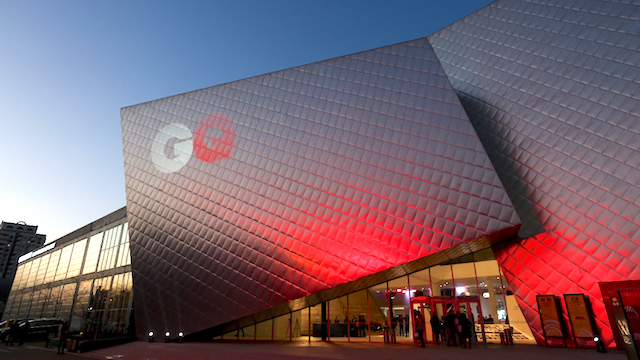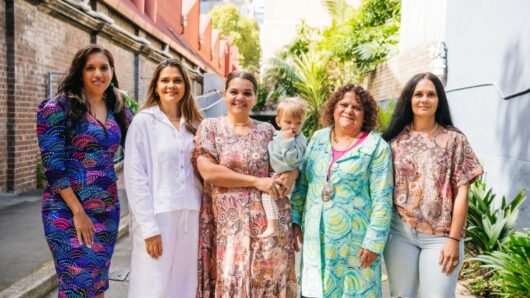It is nine years since the ubiquitous American magazine GQ, whose origins date back to 1931, made its debut in China. In that time it has grown to become the largest-selling male-oriented publication in the mainland.
In a fast-emerging market like China, where fashion is replacing luxury as a symptom of sophistication amongst the more affluent consumers, the rise of GQ and the demographic of its reader base in many ways mirrors the anatomy of the new consumer generation.
Chinese readers of GQ are typically younger than those who read the magazine back in the US.
“I think this is quite a typical phenomenon,” explains Paco Tang, publisher of GQ China, in an interview with Inside Retail Hong Kong.
“In the beginning, we relied on the powerful brand effect of GQ to expand and develop in China, but now we are increasingly focusing on the bonding and relationship between our readers and the GQ brand, via different platforms and immersive experiences.”
In a market where social media was slow to catch on compared with the West, and where Facebook remains largely inaccessible to the masses, brands have had time to learn from the experiences of overseas marketers on trying to connect with millennials. Using platforms like WeChat and Baidu to connect, they have learned from observation that millennials and younger generations will more easily engage with brands.
That positions GQ as something of a matchmaker, providing a link between retailers and fashion labels and their consumers – adding a level of authenticity and acceptability to the brand with its aspirational Western brand cachet serving to engender trust.
Without naming individual labels, Tang confirms our suspicions: “I think during our cooperation with all those brands, they valued the endorsement of the GQ brand, our capability of creating high quality content, and the communication resources as media.”
In the new digital era, the definition of media is very different to that when GQ was launched as Apparel Arts way back in 1931 New York City. It started life as a men’s fashion magazine for wholesale buyers and retail sellers in the rag trade. As customers helped themselves to copies from friendly store owners, the publishers realised there was an opening in the market for a consumer version, and launched Esquire in 1933. Over time, the offspring grew strong enough to devour the parent. In 1957 Apparel Arts became a quarterly before being renamed Gentleman’s Quarterly in 1958, opting for the simpler GQ nine years later. Eventually it became less of a fashion magazine and more of a lifestyle publication.
Writer Mark Simpson coined the term ‘metrosexuality’ in an article for British newspaper The Independent after visiting a GQ exhibition in London in the mid-1990s. “The promotion of metrosexuality was left to the men’s style press, magazines such as The Face, GQ, Esquire, Arena and FHM, the new media which took off in the Eighties and is still growing….,” he wrote. “They filled their magazines with images of narcissistic young men sporting fashionable clothes and accessories. And they persuaded other young men to study them with a mixture of envy and desire.”
Fast-forward to modern day Beijing, and you can see a decidedly similar path.
Men of the Year
A core pillar of the brand’s recognition is the GQ Man of the Year event, which last December held its eighth rendition – a ritzy red-carpet and Champagne event in the Beijing Minsheng Art Museum. Sub-zero temperatures failed to deter a powerful line-up of celebrities from gathering to celebrate the naming of 30-odd men of stature: veteran actress Shu Qi was in attendance, along with esteemed actors Wu Xiubo, Darren Wang, Tong Dawei, Huang Jingyu and Duan Yihong; director Chen Kaige; Chinese models Lü Yan and Xiao Wen Ju; and singers Bruce Liang and Charli XCX.
For the first time, the awards spanned younger millennial and generation-Y achievers in fields of fashion, art, business, architecture, philanthropy and even speed skating. Winners were selected not only for their professional achievements, but for their mindset, emotional connection and charisma.
“GQ China Men of the Year is held to recognise and celebrate outstanding men from various industries, and it’s the biggest brand event for GQ China as well,” explains Tang.
As a brand, GQ is distinctly male – and while the winners taking to the stage and the myriad of supporters in the stalls would hardly relate to the term ‘metrosexual’ any longer, Simpson’s essence of persuading young men to “study them with a mixture of envy and desire” endures.
This glitzy event with its red carpet, local celebrities, crooners, artisans and a vast ensemble of hangers-on (count us among them) was as much about celebrating the coming of age of a US media label in China as it was the worthy achievements of the 28 men who defined last year.
Long live print
To a point, Men of the Year is also a rebuke to those who say the traditional publishing format is on its last legs. Many people believe print media is dying, but Tang disgarees:
“For quite a few years we have been hearing about the decline of print media. I think lots of brands, after falling in love with the internet years ago, have now realised that print media boasts strengths and the advantage of creating high-quality content.”
That said, GQ China is a success because it has embraced new technologies – including the internet (at least the internet as China knows it) – the digital and print media feeding each other (as opposed to off each other) and events like Men of the Year.
“We do not focus only on the quantity of content, but on the quality of the content as well. We launched our IP plan focusing on the requests of our readers, to engage them with the valuable GQ brand, its high quality of content and its sense of worth according to their different interests.
We believe our brand clients will enhance their collaborations with us after noticing what we created to our readers.”
Enter Farfetch, an e-commerce marketplace for luxury boutiques around the world, which ventured into China just last year. Launched by Portuguese entrepreneur Jose Neves in 2008, Farfetch has since evolved into a platform for the luxury industry, connecting customers in more than 190 countries with items from over 700 of the world’s best boutiques and brands from more than 40 countries. Farfetch aspires to being “a truly unique experience with the ability to shop the most extensive selection of luxury on one platform”.
“Farfetch just came to China, so it still lacks the impressive popularity and huge traffic on its website compared with JD.com.”
Farfetch partnered with GQ China Men of the Year with two outcomes: firstly, increasing brand awareness, a sense of GQ’s ‘trend cred’ rubbing off on it. Secondly, GQ has built a membership program, Mr Q, a rich database of fashion-aware men (and women) who fit the Farfetch customer profile perfectly.
More broadly, it is that membership program which is a core driver of business for the GQ brand – way beyond the actual print product.
“Our IP plans are all based on Mr.Q. Then we provide great content via different platforms such as events, WeChat, the magazine and microblogging, all to create a more immersive experience for our readers.
“We believe the content is the key, and a perfect combination of GQ brand and its content will satisfy our readers and clients from the brands eventually.”
Tang believes the greatest challenge for brands entering China, especially those in the fashion and luxury arena, is finding a way to make their brand young.
“Just finding some young celebrities or creating very digitised content is definitely not the best option. A customised and systematic creation covering the idea, execution and more to keep the brand continuously vitalised is the key to success in China.”
And the winners were…
Finally, for the record, the 2017 GQ China Men of the Year were:
Actor of the Year – Duan Yihong
Breakthrough Artist of the Year – Ji Lingchen & Huang Jingyu
The Most Influential Art Institution of the Year – Beijing Minsheng Art Museum
Brand Creative Designer of the Year – Zhu Qinqi
Celebrity Philanthropist of the year – Tong Dawei
Emerging Film Director of the Year – Zhang Dalei & Lv Yulai & Zhang Tao
Author of the Year – Ge Liang
Fashionista of the Year – Wang Dalu & Xu Haiqiao
Creative Expedition of the Year – Lai Guoping
Musician of the Year – Liang Bo
Designer of the Year – Ju Bin
Most Anticipated Actor of the Year – Yang Youning & Zhou Yiwei
Idol of the Year – Yi Yangqianxi
Most Determined of the Year – China Short Track Speed Skating Team
Artist of the Year – Zhao Yao
Connoisseur of the Year – Yang Ziming
Architect of the Year – Ma Yansong
Most Valuable Actor of the Year – Huang Bo
Startup of the Year – Hu Weiyi
Voice of the Year – Li Xiaoming & Chen Xiaoxue & Xu Ke
Actor of the Year – Wu Xiubo
Lifetime Achievement of the Year – Chen Kaige






